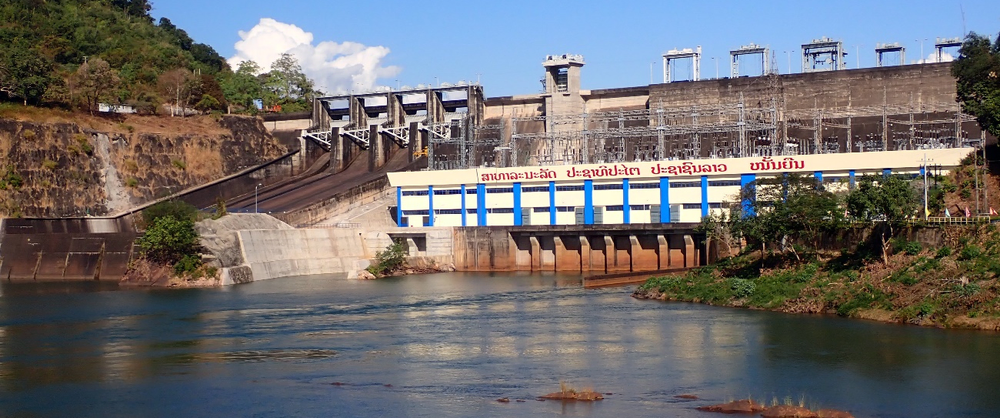
Watershed & Water Management River & Water Resources
We provide comprehensive technical services in Japan and overseas, aiming to realize the ideal rivers required by local communities, such as protection against flood disasters, disaster mitigation measures, provision of stable water resources, and creation of quality river environments for people's recreation and relaxation, for a prosperous life.
In Japan, we handle all areas related to river improvement projects, including the formulation of river improvement plans and river management plans, planning and design of river structures, and seismic performance verification. Overseas, we formulate master plans and implementation programs for water resource development, and plan, design, and supervise the construction of dams, water supply systems, irrigation, and other facilities necessary to protect lives and property from flood damage. In recent years, we have also focused on providing advanced technologies for climate change-related studies and effective utilization of river facilities, including their operational aspects. In the area of asset management, we inspect the state of maintenance and management, plan and design countermeasures, and implement new technologies to help improve performance in order to protect the "lifelines" of towns and regions.

Engineering Services
More than 100 years have passed since full-scale river improvement in Japan. During this time, plans have been revised in response to flood damage and repeated repairs have been made to increase safety against flooding. However, we are now in the midst of ongoing climate change, and the safety of rivers against flooding is declining. Therefore, river improvement plans must now be formulated based on analysis of climate change projections to further improve the safety that has been cultivated in the past.
Since a river channel is a space that allows floodwaters to flow safely, it must be properly maintained while monitoring excessive sediment accumulation, excessive tree growth, and scour and erosion that can lead to levee failure.
On the other hand, river channels are subject to human impacts from river works and facility construction, as well as impacts from flooding. These impacts may be short term, but they may have long term effects over 20 or 30 years. The impact is often manifested as "degradation of the river environment," but the essential causes vary from changes in sediment dynamics from upstream, immobilization of channel channels, immobilization of sandbars, and reduction of plants that provide food for animals and insects, to a complex interplay of these factors.
Thus, river channel management requires comprehensive decision making to ensure a balanced coexistence of flood control, water utilization, and environmental factors, while analyzing the causes of river channel change.
The trend of severe floods continues unabated, and human casualties occur every year. In order to minimize such damage, not only routine river maintenance but also appropriate forecast information to encourage local residents to evacuate is necessary. One such example is flood inundation forecast area maps, which require highly accurate inundation analysis technology. These are also provided to local residents as hazard maps.
On the other hand, when flooding occurs, not only real-time information but also highly accurate forecast information (river level forecast information that contributes to the decision to evacuate residents and forecast information on inflow and discharge for dam managers) is required. In building these forecasting systems, we are working on the use of AI and other advanced technologies. Even if accurate forecasts can be achieved, there is always "uncertainty" in the forecast information. Therefore, it is necessary to consider how to provide information, such as "how to evaluate such uncertainty and link it to actual actions and decisions.
We have also developed a disaster prevention platform called "Bousuke," which provides local governments and private companies with a one-stop shop for risk information using our analysis and forecasting technologies and a wide variety of information related to disaster prevention, and have launched a service and data business to provide information necessary for disaster and disaster prevention response by integrating information on current regional conditions, flooding, and other risks.
Urbanization has led to an increase in the amount of land covered with asphalt and concrete, resulting in increased flood water runoff and decreased groundwater recharge. Declining groundwater recharge has led to the exhaustion of spring water and a decrease in low water flows in rivers, which, combined with domestic waste water entering the rivers, has resulted in a deterioration of river water quality. In addition, global warming is predicted to change the direction of future rainfall. Various efforts are being made to improve the health of the water circulation system in these urbanized watersheds.
Nippon Engineering has developed a distributed physical water cycle model that reproduces and evaluates the water and material cycle in a watershed, and supports the development of a master plan to establish a healthy water cycle system by studying the effects of various measures. The water cycle model allows quantitative evaluation of river flow and water quality when water cycle improvement measures are implemented. It can also predict how water flows in a watershed will change as a result of climate change.
Overseas, we are applying the flood control technologies we have developed in Japan to propose adaptation measures for severe disasters, such as the development of flood control plans, and to propose mitigation measures, such as the expansion of environmentally friendly hydropower to create a low-carbon society.
However, many river structures are still considered to be inadequate to withstand a major earthquake such as the Nankai Trough or an earthquake directly under the Tokyo metropolitan area, which are feared to occur. However, many river structures are still considered to be inadequate in terms of seismic performance and are deteriorating.
Against this backdrop, we propose measures to extend the service life of river structures in conjunction with seismic performance verification and seismic design against the strongest possible future earthquake motion (level 2 earthquake motion) at the location where the structures are installed.
In addition, the recent abnormal rainfall caused by linear precipitation zones and other factors has prompted the promotion of "basin flood control," which involves not only flood control measures within river channels, but also flood control measures throughout the entire basin. In response to this, the construction of "tenacious river levees" to prolong the time required to break the levees and ensure evacuation time even in the event of flood overtopping, and the construction of flood control facilities such as flood control reservoirs and two-lane levees to reduce peak flood flows, are being promoted in cooperation with not only river administrators but also related organizations within the basin. We are working to promote flood control measures based on the premise that overflows are possible.
Social capital development in our country has reached a turning point in the midst of a severe financial situation, with a declining birthrate, aging and shrinking population, environmental issues, and the use of renewable energy. In particular, dam projects are being required to make more careful decisions on new dam construction due to the decrease in efficient dam sites and preservation of the natural environment. However, dams have been fulfilling their functions as the basis of national land formation and the foundation of people's lives, both in terms of flood control and water utilization. Furthermore, the efficient use of existing dams, which are valuable social capital stock, is important in order to cope with climate change, which is occurring on a variety of temporal and spatial scales, and for the efficient operation of hydroelectric power generation, which is a renewable energy source.
Rehabilitation of existing dams includes upgrading dam operations to maximize the capacity of existing facilities, creating new water storage capacity by raising the existing dam, and improving the functions of existing dams through the construction and improvement of discharge facilities. In addition, improvements to facilities for the purpose of preventing sediment from accumulating in the dam lake and improving water quality are also being promoted as ways to refresh dam functions.
Dam rehabilitation work is carried out while operating the existing dam, and therefore requires more advanced technical capabilities in planning, design, and construction than construction of a new dam.
We have extensive experience and expertise in dam rehabilitation, including overseas, and are involved in a wide range of dam rehabilitation projects from planning to design and construction planning, including effective utilization of existing dams through restructuring, based on the unique issues of each dam.
Hydroelectric power is a renewable natural energy source that can match decarbonization, reduce the burden on the global environment, and provide a relatively stable supply. Expectations for hydropower are growing due to concerns about the safety of nuclear power generation and the risk of rising fossil fuel prices for thermal power generation.
In Japan, small- and medium-scale hydropower generation using existing facilities (dams, weirs, waterways), unused drop-offs in agricultural canals, and existing erosion control weirs, and the use of hybrid dams to increase power supply in the rehabilitation of existing dams are expected.
Overseas, small- and medium-scale hydropower generation aimed at improving power quality and local production for local consumption by taking advantage of hydropower's regulating capabilities, as well as large-scale hydropower generation as a major power source component, are making a significant contribution to the stable supply of electric power.
We have expertise in the planning, design, operation, and maintenance of such hydroelectric power generation projects, and are committed to solving future energy issues in Japan and around the world.
Asset management is exactly like a doctor or guardian protecting the "heart" or "source of life" of a town or region. Rivers and water resource development facilities play a variety of important roles in supporting our daily lives, maintaining ecosystems, and supplying energy. But they are not always in good health. Sometimes they stand in danger due to aging or natural disasters. The role of asset management is to check the "physical condition" of such facilities and provide treatment as necessary to keep them in the best possible condition. This includes not only maintenance, but also the use of new technologies and innovations to further improve performance and efficiency. In other words, we are "engineers who design the lifelines of towns and communities. In solving problems, we play a variety of roles at each step of the process, including "inspection (doctor)," "monitoring (detective)," "diagnosis (policing)," "planning and design (architect)," and "management (coach). In each of these roles, we are constantly taking on new challenges to support the safety and prosperity of towns and regions by exercising our expertise, experience, and creativity, while imagining the future and pursuing new possibilities.


